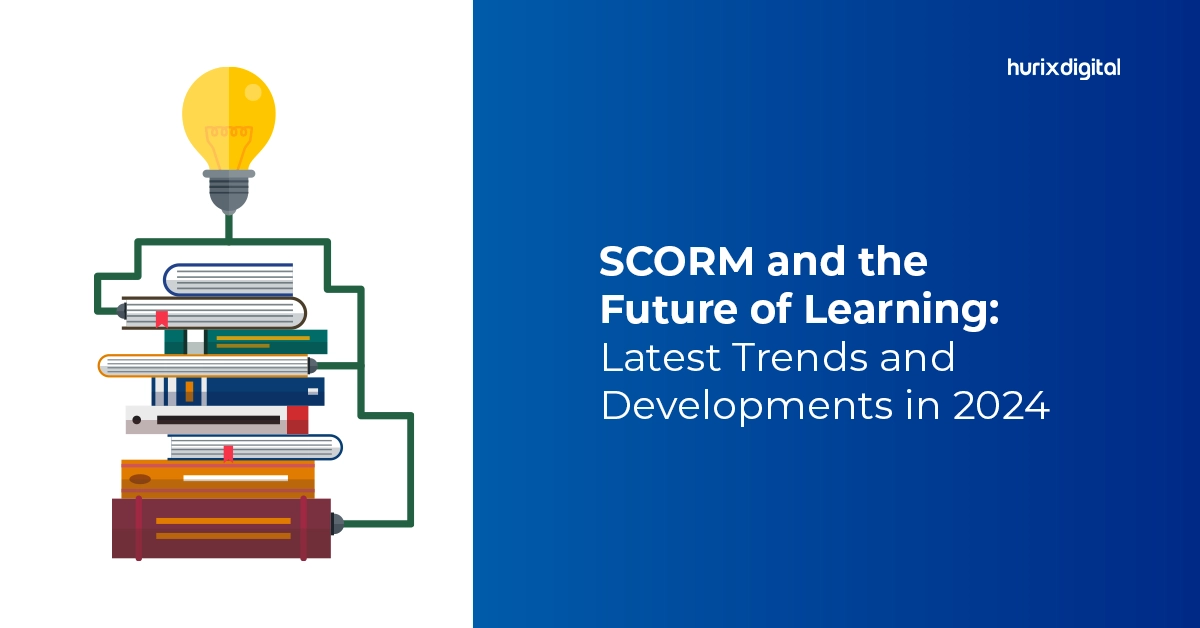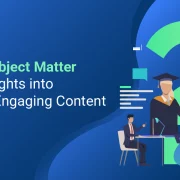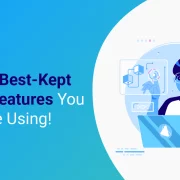
SCORM and the Future of Learning: Latest Trends and Developments in 2024
The last few years have seen the educational landscape undergoing a phenomenal transformation, with eLearning modules and platforms completely revolutionizing the process of learning. The popularity and increased use of e-learning programs in the recent past are also attributed to their easy accessibility and flexibility.
One of the standards that has made a remarkable contribution to the e-learning space is SCORM (Sharable Content Object Reference Model). SCORM standards refer to a specific set of standards and specifications that are designed for creating and delivering e-learning content. The highlight of these standards is that they enable easy interoperability, reusability, and tracking of learning objects across different platforms and systems.
While SCORM compliance has been in place for several years, the advancement of technology and the evolution of learning needs have led to rising trends and interesting new developments that are shaping the future of SCORM in their entirety.
Table of Contents:
Top eLearning Trends And Developments To Watch For in 2024
The eLearning space has been on a consistent rise for some time now. It has not only revolutionized traditional education but has also become an integral part of corporate training and professional development.
Some of several latest trends and developments driving this phenomenal growth are discussed below:
1. xAPI Integration
The rapidly advancing technology has made e-learning much more interactive and immersive today. The traditional SCORM software is not equipped to capture and track such complex learning experiences, and this is where xAPI has emerged as an excellent SCORM alternative.
The xAPI/ Experience API or Tin Can API is one of the emerging trends and the future of eLearning analysis. The highlight of xAPI is that it enables us to record every single activity of the user from any platform.
Earlier known as Project Tin Can and later launched as xAPI or Experience API in April 2013, it allows you to record activities as well as analyze reports to personalize content as per learner behavior.
Apart from this, integration of Tin Can API with SCORM authoring tools can also be used on any platform for leveraging a wide range of day-to-day use cases, such as offering valuable insights into learner likes, behavior, preferences, and more.
2. Immersive Technologies
Various immersive technologies, such as Virtual Reality and Augmented Reality are becoming key components in eLearning course development. SCORM software integrates these technologies to ensure that the lessons are more engaging for learners by transporting them to immersive environments.
It allows them to engage in fun yet realistic scenarios on multiple aspects, such as pronunciation and grammar, which can help boost their motivation level in their language abilities.
Also Read: How Can Immersive Learning Help Prepare Students for the Future?
3. Gamification
Gamification of learning or the use of gaming elements in learning is another interesting trend that is completely revolutionizing the eLearning space. The incorporation of various game elements like rewards, badges, and leaderboards into the overall learning process is allowing educators to enhance engagement among their learners significantly.
SCORM software today incorporates all these gamification features to make the e-learning process more fun and interactive for the learners. Likewise, learning analytics, powered by SCORM, is being used to gather and analyze data on learner performance and behavior.
4. Mobile-First Learning
E-learning today is rapidly evolving from simply being mobile-friendly to mobile-first. Data also highlights the rising demand for mobile education, which is expected to reach a market value of $46.9 billion (at a CAGR of about 26%) by 2024.
A mobile-first design in e-learning essentially requires the development of a mobile app that can allow creators to offer their learners an exceptional mobile learning experience.
Likewise, microlearning is another interesting trend in this space to watch out for. Microlearning or bite-sized content consumption remains one of the most popular and efficient learning materials, especially on mobile devices.
The SCORM version is evolving to support microlearning by allowing the creation and delivery of chunk-sized learning objects that can be consumed either independently or as part of a broader learning path. This is because brief, bite-sized interactive modules are significantly easier for learners to interact with and lead to better retention and knowledge transfer.
5. Personalized Learning Experiences
More than ever, the eLearning sector is embracing personalization. Learners are viewed as active participants in their educational process rather than as passive users of information. SCORM standards are also catching up with this emerging trend by enabling customized content delivery based on specific learner profiles, preferences, and overall performances.
This kind of customization of the learning process to each student’s unique needs is intended to help students overcome obstacles and develop self-assurance.
By customizing the learning experience, SCORM modules enhance overall learner engagement, retention of knowledge, and the effectiveness of the learning process as well.
Also Read: Dictera AI Assessment Generators vs. Traditional Testing Methods: Which One is Right for You?
Conclusion
While SCORM standards remain a popular choice in the e-learning industry overall, it largely struggles in terms of relevancy, especially in today’s digitally advanced landscape of new technologies, the latest trends, and updated standards.
The key here is adaptability, where the SCORM version must be able to meet the constantly changing needs and expectations of learners, such as gamified learning and personalized, immersive learning experiences. Likewise, SCORM software must be accessible, mobile-friendly, and responsive enough to keep up with the changing needs of devices, platforms, and e-learning standards as a whole.
Consider working with Hurix Digital to learn more about how to produce eLearning content that is both highly engaging and SCORM-compliant. This way, you can create and build interesting course content in rich multimedia and digital forms using our powerful yet user-friendly platform for instructors, trainers, and content providers.
If you want to make creating e-learning content easier and more efficient, check out Dictera. It automatically creates smart assessments, collects valuable data, and lets you collaborate in real time to build better content with less effort.
Book a free trial to learn more!

Vice President – Digital Content Transformation. He is PMP, CSM, and CPACC certified and has 20+ years of experience in Project Management, Delivery Management, and managing the Offshore Development Centre (ODC).




